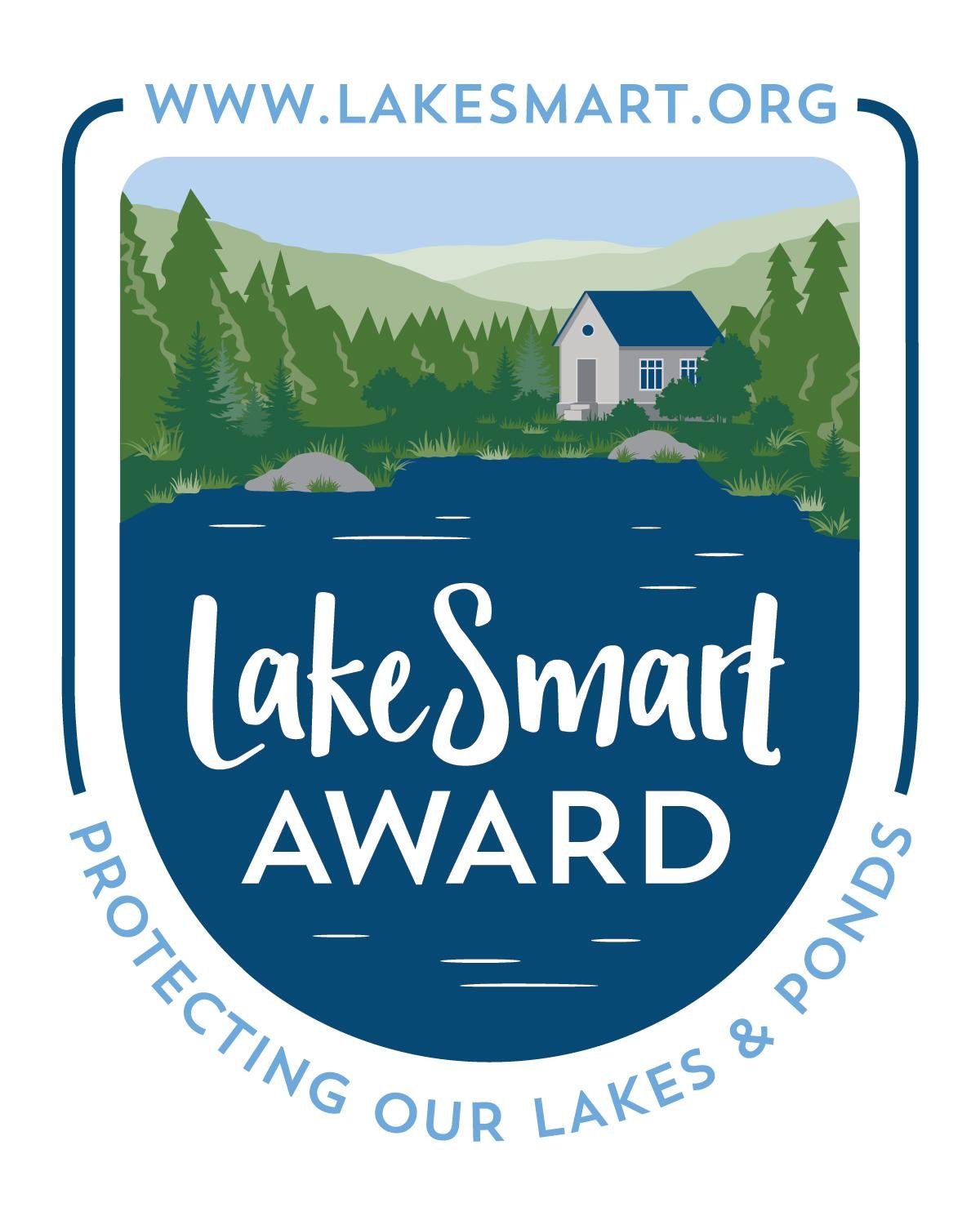For the sake of Lake Winnecook
Do you appreciate our lake’s clear, clean water? What does the beautiful panorama of our lake, the song of a loon calling in the evening, or a boundless summer day spent swimming, fishing, or boating mean to you? Will you help protect our lake so your children and grandchildren will experience the clean, clear water they deserve?
The LakeSmart goal is to stabilize, capture, divert and absorb!
WHAT IS LakeSmart?
LakeSmart is an education and outreach program that rewards lakefront homeowners who manage their land to protect water quality. The program is free, non-regulatory, and voluntary. Participating homeowners receive individualized suggestions for keeping pollutants from stormwater out of lake waters.
Click here for our LakeSmart brochure
HOW DOES IT WORK?
Maine Lakes partners with lake association volunteers, who visit with neighbors and friends to assess their lakeside properties, checking for erosion around structures, in the yard, and along the lake. Properties that protect the lake and meet LakeSmart standards earn the coveted LakeSmart Award, consisting of two distinctive signs that can be posted at the waterfront and driveway. The signs identify the homes of good stewards and show everyone what lake-friendly living looks like.
Property owners not yet meeting the LakeSmart standards receive recommendations for what they can do to reduce erosion and protect their lake. Whether it’s installing a dripline trench around a structure, reducing lawn size and maintenance, adding more plants to a shoreline buffer, or covering bare areas of soil with erosion-control mulch, there is always something landowners can do to reduce their impact on the lakes.
WHY IS OUR LAKE IMPAIRED?
Phosphorus is a naturally occurring element that feeds lake algae, a healthy part of any lake ecosystem. But too much phosphorus can put a lake out of balance, feeding massive algae blooms that smell terrible, turn water green, degrade wildlife habitat, and potentially harm human and pet health.
You can find phosphorus in lots of places – pet waste, fertilizers, household cleaners, motor oil – none of which should ever find their way into a lake. But the biggest source of phosphorus is sand and soil that is washed into a lake after a rain event.
Signs of erosion on your property show you that phosphorus has a direct path to your lake. Look around for channels left by rain after a storm, especially near buildings and parking areas.
WHY DO WE NEED LAKESMART?
A lake’s watershed is the area of surrounding land that channels rainfall and snowmelt via creeks, streams, rivers, ditches, storm drains, and groundwater to the lake. Watersheds supply the water that replenishes our lakes, along with other elements critical to supporting life, such as nutrients and organic matter
An undeveloped watershed keeps lakes and rivers clean by absorbing rainfall and keeping excess nutrients, such as phosphorus, out of the water. Multiple layers of vegetation, from the tallest trees to tiny seedlings and from shrubs to ferns and perennials growing on the forest floor, help intercept rain, reducing the amount of water hitting the forest floor. Loose, deep layers of duff—the accumulation of leaves on the forest floor—absorb water and nutrients, minimizing flow directly into waterbodies.
However, every one of us lives in a developed watershed. Developed watersheds have roads, manicured lawns, rooftops, houses, driveways and parking lots that create IMPERVIOUS surfaces. These surfaces prevent rain from soaking into the ground. Rain then channels over land. Those channels gather speed and size as well as excess nutrients as they erode soils. Culverts, ditches, and storm water systems help reduce erosion and direct the flow of rainwater, but many smaller sources of erosion around homes and camps are sources of pollutants and excessive nutrients to our lakes and ponds.
LakeSmart helps address these small sources of erosion that together add up to big lake impacts.
WHAT DOES LAKESMART LOOK LIKE?
LakeSmart properties are beautiful! They are more natural than suburban, providing wildlife habitat, food for pollinators, cooling shade, privacy screening, and so much more. They are functional properties, too…with docks, decks, recreation areas and winding paths. If each homeowner does a little, the sum of many small actions adds up to a lot of lake protection. And being LakeSmart is the place to start!
Additional Resources
The Complete Guide to Lake Stormwater Management
(24) Do It Yourself Conservation Best Management Practices
“If your lake could talk” Shoreline Buffer slideshow




















